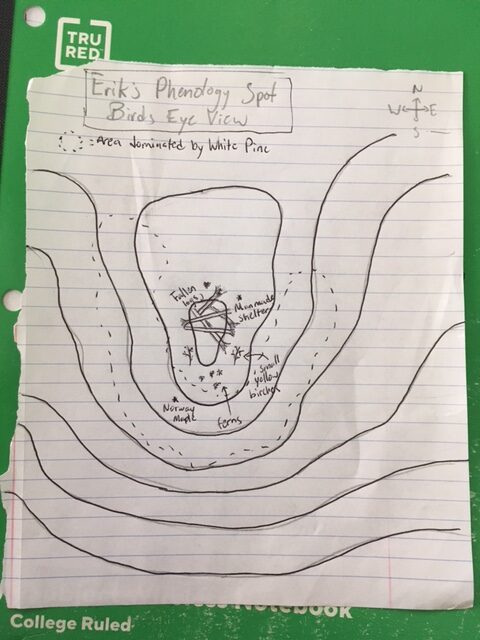Walking through Centennial Woods to get to my phenology spot, the whole forest felt still. The trees were stoic and frozen, and, other than the occasional plane or bird call, it was all relatively silent. Then, as soon I sat quietly and began to observe, it all came to life. The trees that just moments ago seemed to be hidden in a shell began to animate themselves, rustling and swaying in the breeze. The birds started to call, one even hopped around on the forest floor 10 feet from me. And, of course, the mosquitos came out too. In that 15 minutes of swatting away bugs, I realized why the woods seemed to come alive when I set my bag down and observed. Imagine being in a very loud room for an extended period of time. Maybe there is a baby crying or a DJ playing music over large speakers. Once you step outside that room, the quiet feels quiet. That is what stepping into a forest is. Our world, at least the human part of it, is very loud. Sirens are constantly blazing, drivers are constantly honking, we have assignments due at midnight and people to interact with in almost every moment. But the woods is quiet. At least to us. It speaks constantly too, but our ears are so attuned to the language and heightened volume of our everyday lives to hear it very well. It takes a moment to stop and listen very closely to hear what it has to say, to know that it is very much alive.
In my observation, I did notice a few differences in the area. Firstly, the long grasses that matted much of the swampiest portions of the spot were no longer there. Neither was much of the honeysuckle that featured prominently in the understory a month ago. Ferns, mosses, and other short flora still dotted the floor, but it was noticeably less green. Additionally, coming at no surprise to anyone, the yellow birch that occupied to swamp had dropped all their leaves. The only trees in the area that were still photosynthesizing were the hemlocks and white pine that lined the edge of the basin, as well as one stubborn norway maple that sat slightly elevated, southwest of the wettest area.
Here’s my birds eye view drawing:
